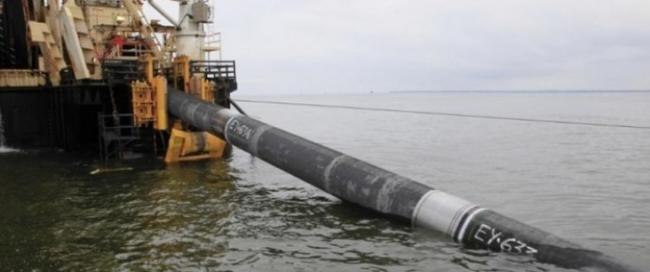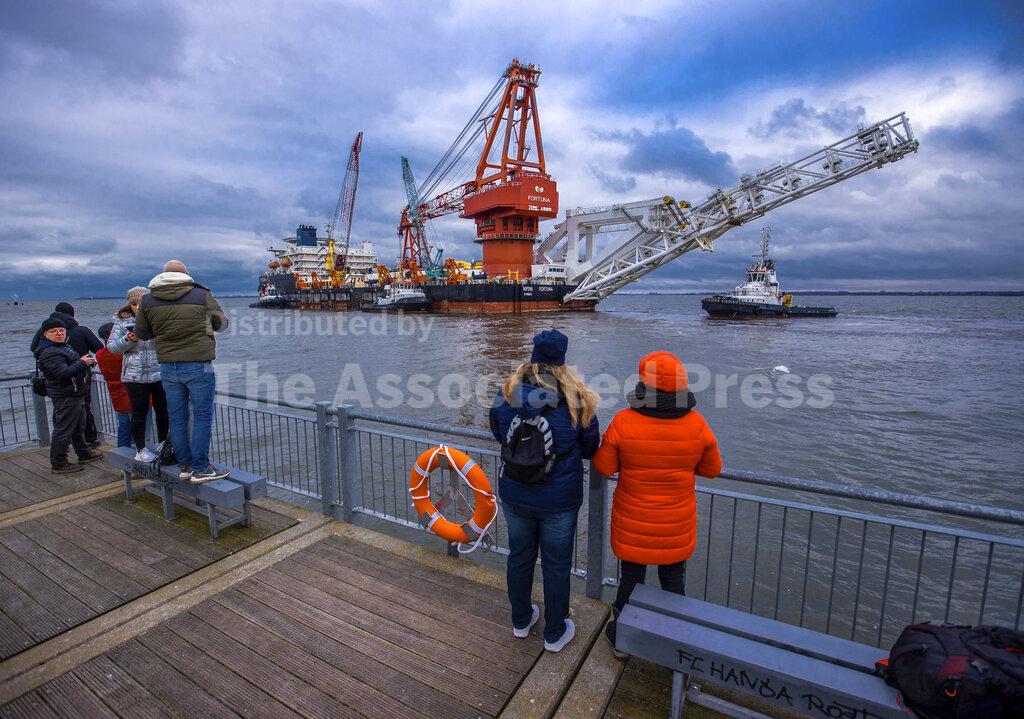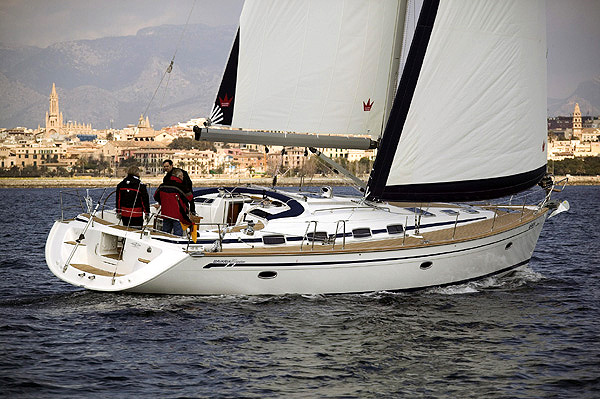
James Bamford on Israelgate and Nordstream
David Swanson / Talk World Radio
(May 8, 2023) — This week on Talk World Radio we’re discussing Israelgate and Nordstream. Our guest, journalist James Bamford, has a new book called Spyfail: Foreign Spies, Moles, Saboteurs, and the Collapse of America’s Counterintelligence, and recent articles in The Nation, one called “The Candidate and the Spy,” another “The Nord Stream Explosions: New Revelations About Motive, Means, and Opportunity.” See https://www.thenation.com/authors/james-bamford
The Nord Stream Explosions:
New Revelations About Motive, Means, and Opportunity
As new details emerge about the pipeline blasts, they also prompt questions: What did US intelligence know about the biggest whodunit of the century, when did they know it, and how did they know it?
James Bamford / The Nation
https://www.thenation.com/article/world/nord-stream-pipeline-explosions/
(May 5, 2023) —At 00:03 GMT on a hazy dark morning last September, Peter Schmidt was among the first to put out an alert. A seismologist at Sweden’s National Seismic Center, his job was to read long wavy lines on a computer screen and raise the alarm in case of an earthquake. “Our calculations show a magnitude of 2.3,” Schmidt said. But oddly, this didn’t look like an earthquake. Instead, it was an enormously powerful explosion.
“With an energy releases this big, there isn’t much else than a blast that could cause it.” Its epicenter was deep beneath the Baltic Sea just off the Danish island of Bornholm, a black, watery void except for a long cement-covered gas pipeline known as Nord Stream 2. Now through gaping holes in it and its twin, Nord Stream 1, gigantic bubbles of methane gas were heading to the surface instead of to the homes of millions throughout Europe at the start of a long, cold winter.
Hours later, Danish Prime Minister Mette Frederiksen addressed a crowd of reporters. “It is the authorities’ assessment that these are deliberate actions. It is not an accident,” she said. “The situation is as serious as it gets.” Swedish Prime Minister Magdalena Andersson agreed: “We have concluded that this is likely a deliberate act, that is, it is likely an act of sabotage.” Almost immediately—but without offering any evidence—both Russia and the United States began pointing fingers of blame at each other for this deliberate act of war. It would soon become the biggest whodunit of the century.
US and European intelligence agencies have reportedly obtained intelligence indicating that the attack was state-sponsored and carried out by a group affiliated with Ukraine, possibly an intelligence unit. Four days after the sabotage, the German publication Spiegel International reported that the CIA had months earlier warned their German intelligence partners, the BND, about a possible attack. “U.S. intelligence claimed to have intercepted Russian communications in which concerns were expressed about possible Ukrainian attacks on Western infrastructure,” the report said. “The Ukrainians allegedly tried to rent a boat in Sweden for this purpose.”
Other intercepts, also obtained prior to the blasts—but only discovered after the attacks—picked up similar communication among pro-Ukrainian individuals discussing possible sabotage on the pipeline. According to the German newspaper Die Zeit, a Western intelligence agency was said to have sent to European partner intelligence agencies shortly after the attack a tip that a Ukrainian commando unit was responsible for the destruction.
The paper added that at least one of the boats used in the secret operation was rented from a company based in Poland and apparently owned by two Ukrainians. Finally, The New York Timesreported in March that intelligence reviewed by US officials suggested that a pro-Ukrainian group carried out the attack.
But beyond such allegations, there has been little reporting on Ukraine’s covert capabilities and hostile intentions when it came to the pipeline, or whether other nations might have acted as co-conspirators. Did Ukraine have the means, motive, and opportunity to commit such a violent and audacious act? Nor has there been any insight into what US intelligence may have known before and after the blasts, and how they knew it.

MOTIVE
Ukraine certainly had a motive. For years, the country made great profits in transit fees as Russian gas passed through its pipelines to Europe. But that would largely end with the final completion of the $23 billion Nord Stream 1 (activated in 2011) and 2 projects. The pair were designed to carry approximately 55 billion cubic metersof natural gas a year directly, and at a lower cost, across the Baltic Sea from Vyborg and Narva Bay in Russia to Lubmin and Greifswald in Germany, for distribution throughout Europe.
In addition to depriving Ukraine of much needed revenue, the project would also make Europe far more heavily dependent on Russia, Ukraine’s bitter enemy since the annexation of Crimea and the Kremlin’s support for pro-Russian separatists in the Donbas in 2014. Because of that, and because Nord Stream would also compete with shipments of US liquefied natural gas to Europe, in December 2019 President Trump imposed sanctions on the ships and companies building the pipeline, owned and operated by a consortium whose majority shareholder is the Russian state-owned Gazprom. The effect of those sanctions delayed construction of the second pipeline, Nord Stream 2, for about a year.
But on February 6, 2021, work resumed, now with Russian’s own pipe-laying ships, including the massive Fortuna, which dropped its dozen anchors about 28 kilometers south of the Danish island of Bornholm and immediately began preparatory work for the completion of Nord Stream 2. By then, the pair of 1,200-kilometer pipelines were about 94 percent finished.
In Kyiv, the resumption of work was viewed as nothing less than an act of war. Andrey Kobolev, chairman of Ukraine’s state gas producer and distributor Naftohaz Ukrainy, said in a social media post that “halting Nord Stream 2 is an issue of life or death” for citizens of Ukraine. As a result, stopping Nord Stream quickly became a top priority of Ukraine’s Foreign Intelligence Service, the SZRU, and its newly appointed director, Oleksandr Lytvynenko, a graduate of Moscow’s FSB academy.
He spent months after his promotion attempting to force the shutdown of the operation. The threats posed by the pipeline, the spy agency warned, ranged from espionage—“NS2 is also a potential intelligence tool. The Kremlin might place surveillance capabilities along the pipeline”—to war: “The NS2 launch will increase the probability of additional Russian military action against Ukraine.” The solution: “The fight should be renewed to prevent Nord Stream 2 from starting operations,” the SZRU argued. “Stopping or delaying NS2 is a good place to start, even now.” And with a budget in 2021 of $4 billion, the spy agency was well equipped financially to carry out a wide variety of covert operations.
In addition, Ukraine may have had help from its closest European ally in its fight to kill Nord Stream: Poland. Another bitter foe of Moscow, Poland also had profitable Russian pipelines running through its territory—along with a similar fear that the new route would increase costs and strengthen Moscow’s grip on Europe. As a result, Poland became the first European nation to introduce sanctions against Nord Stream 2, sanctions that specifically targeted the hated Fortuna, the massive Russian ship that was then in the process of laying the final 75 kilometers of the pipeline.
On February 22, 2021, a few weeks after the Fortuna began work off Bornholm Island, the Polish and Ukrainian foreign ministers Zbigniew Rau and Dmytro Kuleba, respectively, wrote a joint opinion piece in Politico titled, “Nord Stream 2 has damaged the West enough. Time to put an end to it.” In it, they claimed that “Russia is dangerously close to completing the twin pipeline, Nord Stream 2,” and jointly called on President Joe Biden “to use all means at his disposal to prevent the project from completion.” A few days later, Mykyta Poturayev, head of a delegation of Ukrainian lawmakers said, “Nord Stream 2…is about supporting Russia’s military machine.”
Beyond talk, Poland also began taking action. In early April, Andrey Minin, a senior official at the Nord Stream 2 AG consortium, charged that the Fortuna and other ships involved in the project had been the target of “regular provocations,” including the penetration of the 1.5-mile security perimeter surrounding the worksite. “We are talking about clearly planned and prepared provocations using fishing boats as well as warships, submarines, and aircraft to hinder the implementation of the economic project.

This is perhaps an unprecedented case of its kind in history,” he said. Among the incidents, according to Minin, was one involving a Polish trawler, SWI-106, that tried to ram the Fortuna, but was prevented by the intervention of a support vessel, the Russian icebreaker Vladislav Strizhov, that absorbed the collision. Afterward, the Polish captain apologized for the accident.
In addition, according to Minin, a Polish naval ship was seen maneuvering near the Fortuna, and a Polish anti-submarine aircraft engaged in regular flyovers of Fortuna’s worksite. At another point, an unidentified submarine emerged less than a mile from Fortuna. One report identified it as Polish (the Polish Navy currently operates one Soviet-era Kilo Class submarine and two Kobben Class boats). According to Minin, the sub was presumably targeting Fortuna’s dozen anchor lines—deployed to keep the ship stable during the pipe-laying operation. Finally, despite the protests, sanctions, and harassment, in September 2021 the crew of the Fortuna laid the final section of pipe, completing the project.
MEANS
By 2022, Ukraine certainly had a motive to “put an end to” Nord Stream 2. And beyond public view, it also had the means to carry out such an operation. One place with experience in blowing up things that Ukraine wanted gone is the SZRU’s sister military spy agency, the Main Intelligence Directorate (MID). It is the organization believed to be responsible for masterminding the massive explosion that destroyed part of the Kerch Strait Bridge, which links Russia to Crimea, as well as drone strikes deep within Russia. Including, possibly, the double drone attack on the Kremlin on Wednesday, which may spark a devastating retaliatory strike on Kyiv.
According to the MID’s chief, Kyrylo Budanov, “Ukrainian intelligence is able to conduct operations in any part of the world, if necessary.” Allegedly among them was the deadly car bomb assassination near Moscow of Daria Dugina, the daughter of Aleksandr Dugin, a prominent Russian supporter of the war—and the intended target of the attack.
Although officials in Kyiv denied responsibility, US intelligence believesthat “elements” of the Ukrainian government—a euphemism often referring to intelligence organizations—approved the operation. And still another MID covert operation, as revealed in the recently leaked cache of classified Pentagon documents (allegedly by Airman Jack Teixeira on a Discord group chat), was a plot, later called off, to launch a number of covert, deniable attacks on Russian forces in Syria with the help of Kurdish mercenaries.
In addition to its SZRU and MID covert intelligence organizations, Ukraine has also secretly developed a very advanced undersea warfare capability. A month after the Nord Stream blast, Ukraine’s 73rd Special Maritime Operations Center launched an unprecedented large-scale attack against Russia’s Black Sea Fleet in Sevastopol using both unmanned aerial vehicles and unmanned undersea vehicles (UUVs). A week later, President Zelensky announced, “We will start another fundraising campaign next week, we want to collect funds for a whole fleet of sea drones.”
Among Ukraine’s numerous weaponized UUVs is the Toloka, which is equipped with a night-vision camera, sonar, hydrophone, GPS autopilot, and even a periscope-type device. Also known as a “loitering torpedo,” the TLK 1000 can remain on standby mode for up to three months,; is capable of covering 2,000 kilometers underwater, and is built with a warhead that can hold over 5,000 kilograms (about 11,000 pounds) of explosives. The smaller TLK 400 can carry 500 kilograms (about 1,100 pounds) of explosives.
According to NATO officials, the pipelines were damaged by two explosions, each with the force of about 1,100 pounds of TNT. A British defense source told the London Times that a “premeditated” sabotage could have been prepared by undersea drones that laid the explosives weeks beforehand.

OPPORTUNITY
Finally, there is the question of opportunity. In the summer of 2022, a few months before the sabotage, the American and British Royal Navy began training dozens of members of the Ukrainian Navy in the use of UUVs and high-tech undersea warfare. The operation, run by the British Navy’s Diving & Threat Exploitation Group, taught the Ukrainian Navy personnel a wide variety of methods and techniques for the launching and recovery of sophisticated unmanned undersea vehicles, among them the MK-18 Kingfish and the REMUS 300.
Data analysis was also part of the program. According to NATO, much of the training, including “complex multi-vehicle UUV missions…was conducted off the coast of Bornholm, Denmark,” as part of the organization’s BALTOPS 22 exercises. “The BALTOPS Mine Counter Measure Task Group ventured throughout the Baltic region practicing ordnance location, exploitation, and disarming in critical maritime chokepoints,” said a press release issued by the US Sixth Fleet.
A key part of the program involved training the Ukrainians in using UUVs to search for mines as well as clearing them. For the British Navy, this involves using UUVs such as the remotely controlled SeaFox COBRA which gets next to a target and then detonates with a powerful charge, such as C4. Additionally, the British Navy gave the Ukrainians six of their high-tech UUVs. These were useful gifts for anyone seeking to locate a nearby pipeline, the coordinates of which are simply listed on public sea charts—just as the training in mine clearing and underwater demolition was useful for anyone desiring to blow it up. “The expert skills being taught here,” said First Sea Lord Adm. Sir Ben Key, will help Ukraine “repel Russian aggression.”
Also, German intelligence is reported to believe that at least one of the boats used in the attack was a 15.57-meter, single-masted sloop, the Andromeda. It was rented on September 6 by six people, allegedly including several Ukrainians and others with fake passports, from a small marina on the Baltic Sea in Rostock, Germany. Curiously, the rental fee was paid by a company registered in Poland but believed to be controlled by Ukrainians.
A search of the boat later turned up small traces of “military-grade” explosives that matched the batch of explosives used on the pipeline. But the speculation has almost exclusively focused on whether divers from the boat made dangerous and repeated dives 200 feet down to the pipeline to lay the several thousand pounds of explosives—a very unlikely scenario, especially without a decompression chamber.
Instead, it would have been far more feasible to simply use a UUV controlled by a laptop—such as the REMUS 300 that the Ukrainians trained with. It’s listed as a “two-man portable” with a maximum depth of 1,000 feet (305 meters) and a mission duration of 30 hours, and is equipped for intelligence, surveillance, and reconnaissance, as well as anti-submarine warfare. It can be launched simply by placing it in the water. And given the Toloka, the Ukrainians certainly know how to weaponize UUVs.

On the Baltic Sea, the Russian lay vesselFortunalies off Rostock.
We know that on September 26, 2022—shortly after the UUV training sessions ended—powerful blasts tore through Nord Stream’s steel and concrete reinforced pipes. Some country, or countries, “put an end to it”—precisely as the Polish and Ukrainian foreign ministers had demanded in their opinion piece. The first rupture point was on Nord Stream 2 just off Bornholm Island—on the exact segment of the pipeline built by Russia’s Fortuna: the same area repeatedly targeted by the Polish air and sea vessels, along with the possible Polish submarine; and where much of the UUV training took place.
We know that on September 26, 2022—shortly after the UUV training sessions ended—powerful blasts tore through Nord Stream’s steel and concrete reinforced pipes. Some country, or countries, “put an end to it”—precisely as the Polish and Ukrainian foreign ministers had demanded in their opinion piece. The first rupture point was on Nord Stream 2 just off Bornholm Island—on the exact segment of the pipeline built by Russia’s Fortuna: the same area repeatedly targeted by the Polish air and sea vessels, along with the possible Polish submarine; and where much of the UUV training took place.
Yet almost immediatelyafter the explosions—and without offering a scintilla of evidence—a top aide to Ukrainian President Volodymyr Zelensky quickly began claimingthat the destruction was an act of terrorism orchestrated by Moscow. For Zelensky, this was a win-win: destruction of the hated pipeline and the blame placed on his mortal enemy, likely followed by more sanctions. But Mats Ljungqvist, a senior prosecutor leading Sweden’s investigation into the sabotage, placed no credibility in such a charge.
“It’s my job to find those who blew up Nord Stream,” he said. “Do I think it was Russia that blew up Nord Stream? I never thought so. It’s not logical.” Nor, beyond reporter Seymour Hersh’s elaborate, largely unsourced and self-published allegations, is there any evidence or indication that the United States itself was behind the blasts. But that still leaves open the question: What did the US know and when did it know it?

The Andromeda, a 50-foot Bavaria 50 Cruiser recreational sailing yacht.
In carefully worded statements, US officials have said the president and his top aides did not authorize a mission to destroy the Nord Stream pipelines, and that there was no US involvement. Left unanswered was whether the United States had prior knowledge—either directly or through indications picked up by the intelligence community—as some evidence indicates, or whether there was any attempt to stop the operation. Not to mention what US intelligence has learned in the many months since the blasts.
According to Mats Ljungqvist, who is leading Sweden’s investigation, remnants of explosives were found on some of the debris from the blast, clues that might lead to what nation-state might be involved.
In addition to eavesdropping from satellites in space and surveillance aircraft in the sky, US intelligence also constantly monitors Russia and other countries in near-real time from beneath the seas—including from under the Baltic, where arrays of acoustic sensors tethered to the seafloor would certainly have been able to pinpoint the exact time and location of the massive undersea explosions. In fact, within hours of the blasts, two US Navy reconnaissance aircraft, dispatched from Iceland, circled an area close to the ruptures, according to tracking data reviewed by Reuters.
Even more important, by analyzing the distinct engine sounds of the ships, submarines, and UUVs passing above in the days surrounding the sabotage, US intelligence would have likely been able to “fingerprint” them and determine their nationality and exact identity. While the transponder on a ship can be switched off, rendering it invisible to satellites, as long as its engines are running it can be detected by the US Navy’s little known and highly secret worldwide Integrated Undersea Surveillance System. This is the updated and far more sophisticated version of the earlier Sound Surveillance System, placed at key locations on the bottom of oceans, seas, and straits around the world.
In the Baltic Sea, the arrays were placed with the covert help of the Swedish Navy. Admiral Elmo R. Zumwalt, a former US chief of naval operations, was quoted on a Swedish television program exploring Sweden’s secret help saying that there was “an understanding on both sides that there should be no record in any formal way of the liaison.”

Ambassador Vassily Nebenzia, Permanent Representative to the UN.
Once collected, the data would have been transmitted in near-real time to analysts working at the Theater Undersea Surveillance Command, Atlantic (TUSC LANT)—a highly secure building double-wrapped in security fencing on the shore of Lake Tecumseh in Dam Neck, Va. Like the FBI’s human fingerprint database, TUSC LANT has an enormous collection of maritime fingerprints, recorded engine sounds, including those of both adversaries and friendly nations.
Given the fact that the United States has long had the seafloor of the Baltic secretly bugged, with the ability to identify and geolocate passing vessels, combined with the presence of reconnaissance planes within a few hours of the explosions, it is highly likely that the US knows far more about what happened, and who is responsible, then it is revealing. And while there is little evidence of direct US involvement, and even less that Russia blew up its own pipeline, a number of indications clearly point to Ukraine and Poland.
The involvement of close allies in the pipeline destruction would also explain Washington’s defining silence on the attack. And the recent leak of Pentagon documents shows how many secrets about the war the administration is keeping from the public. But Americans need to know whether the country they are supporting with over $113 billion in aid and military assistance deliberately targeted fellow NATO countries and the people of Europe with a massive act of war.
James Bamford is a best-selling author, Emmy-nominated filmmaker, and winner of the National Magazine Award for Reporting. His most recent book is Spyfail: Foreign Spies, Moles, Saboteurs, and the Collapse of America’s Counterintelligence, published by Twelve Books.
Posted in accordance with Title 17, Section 107, US Code, for noncommercial, educational purposes.
